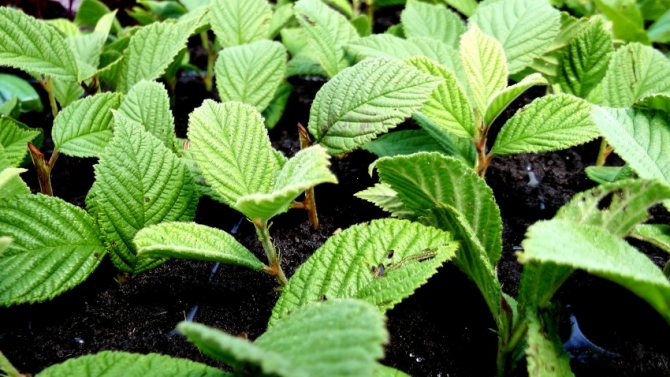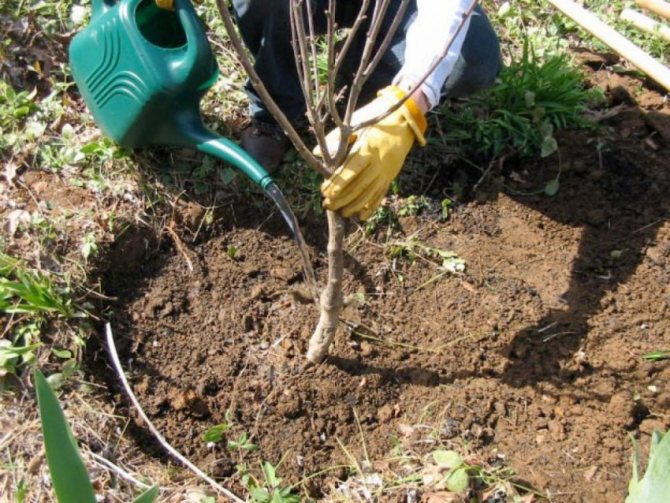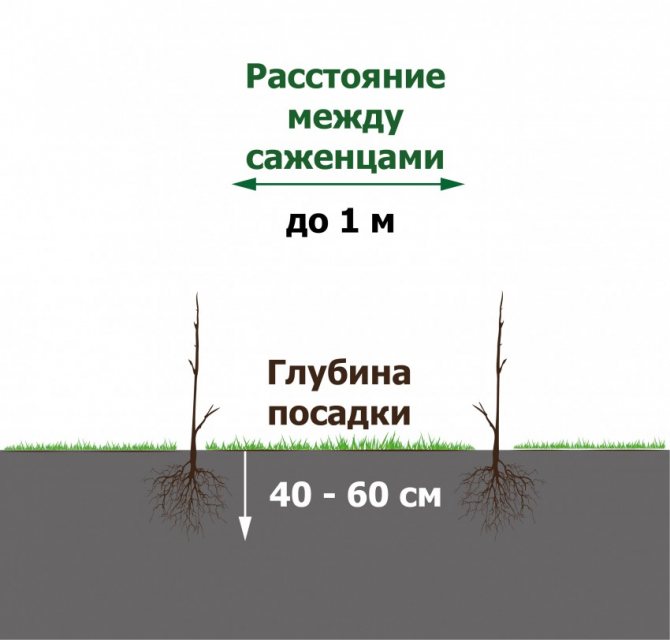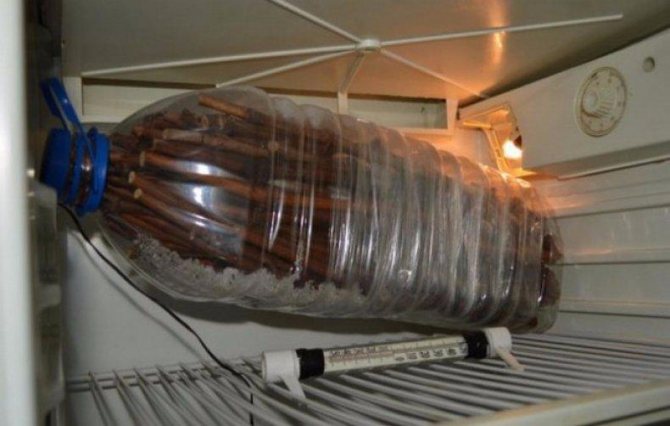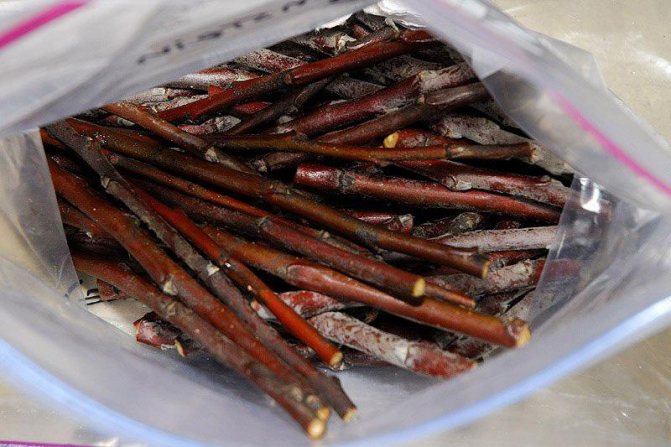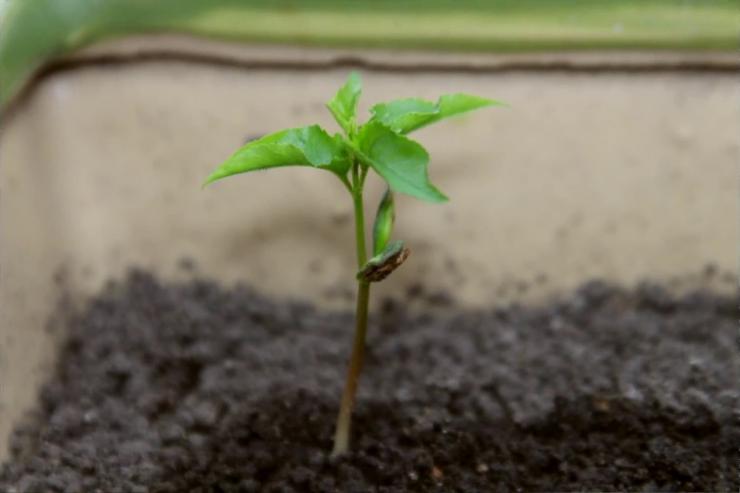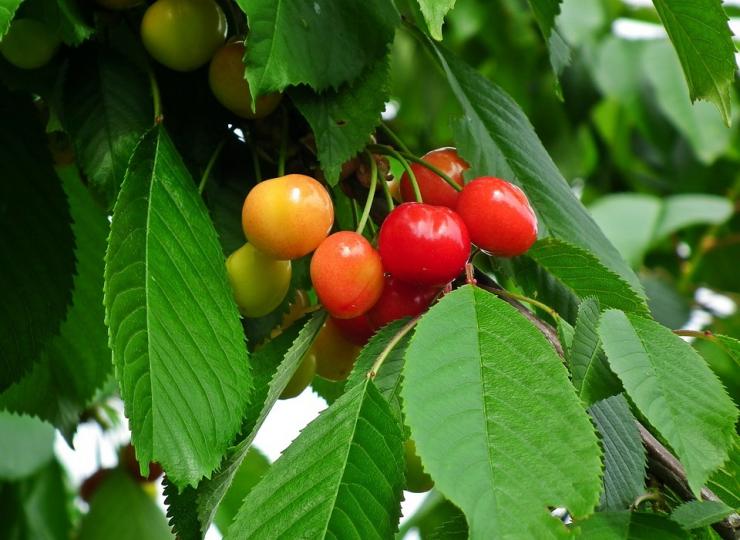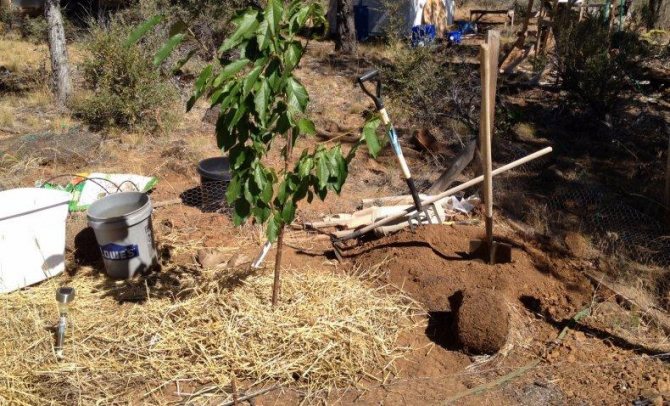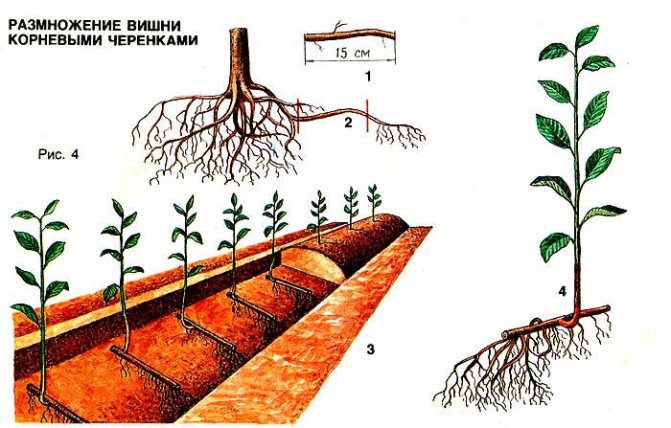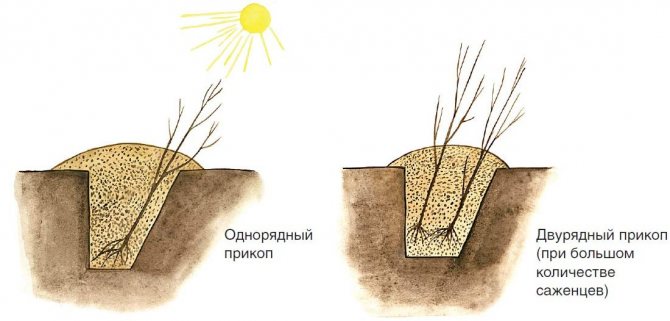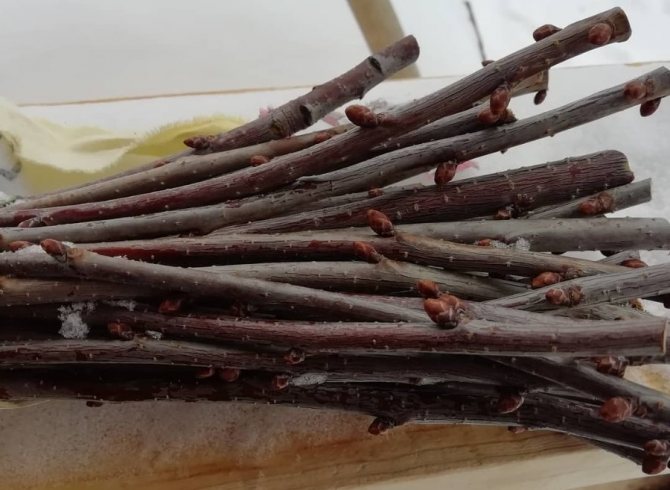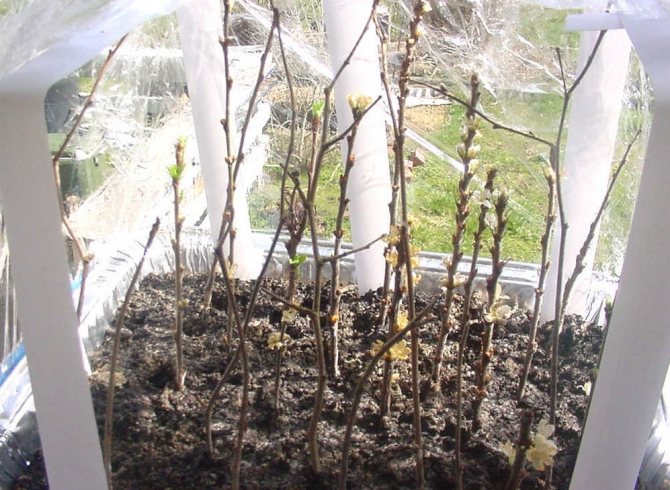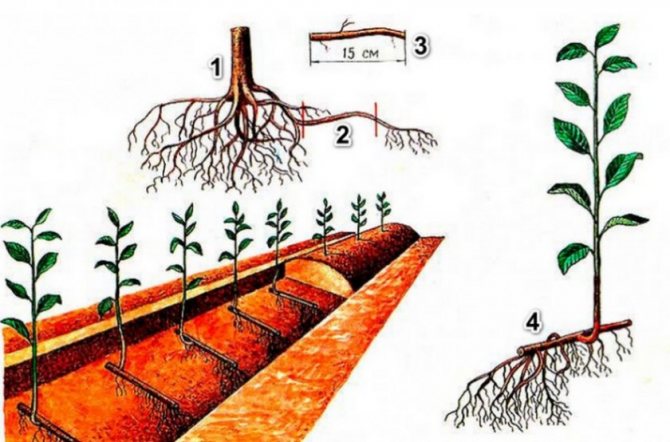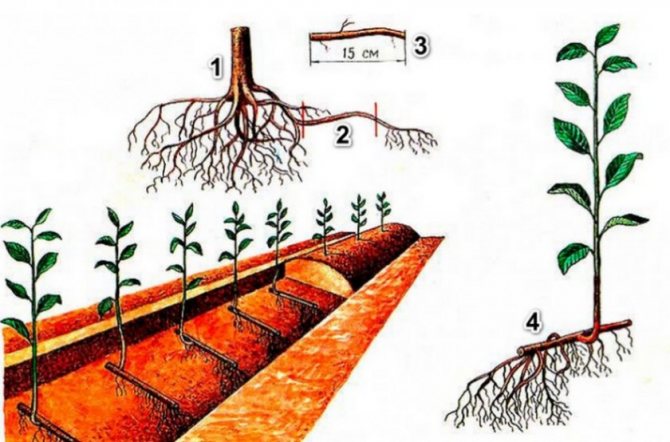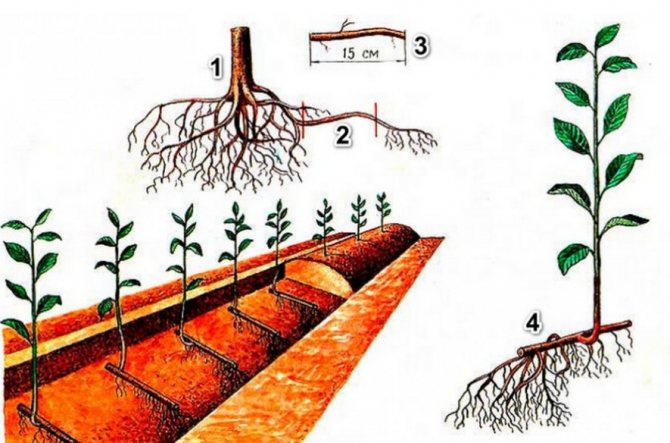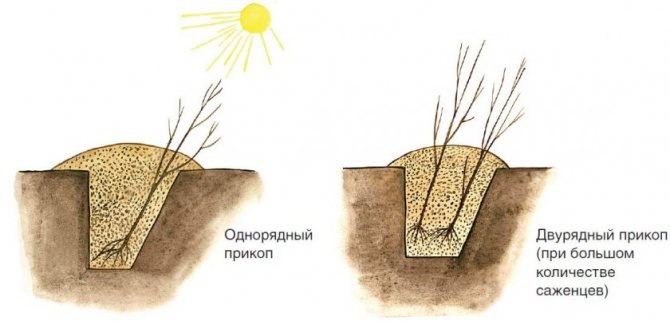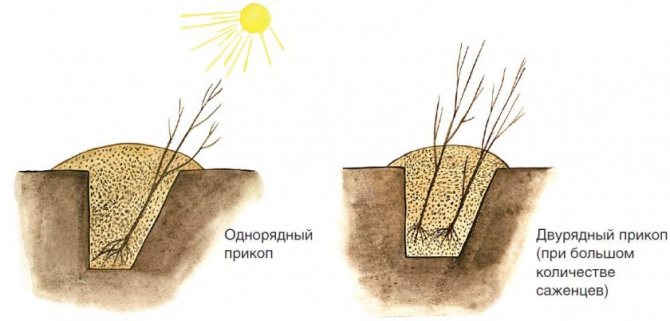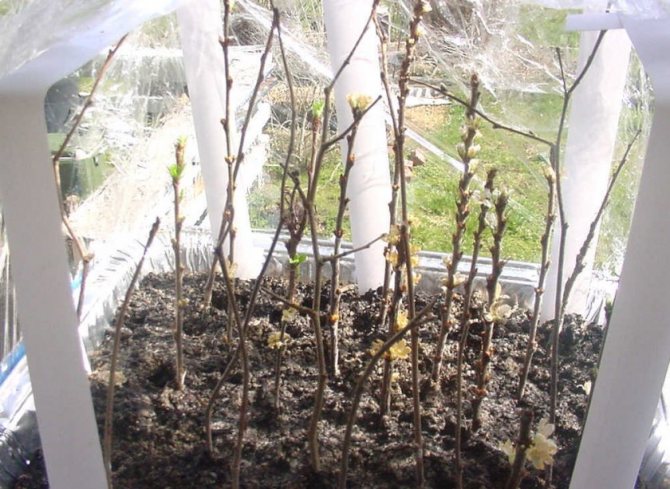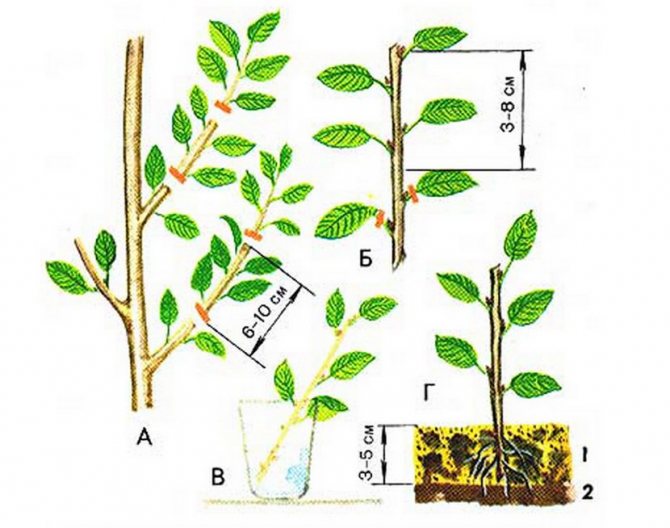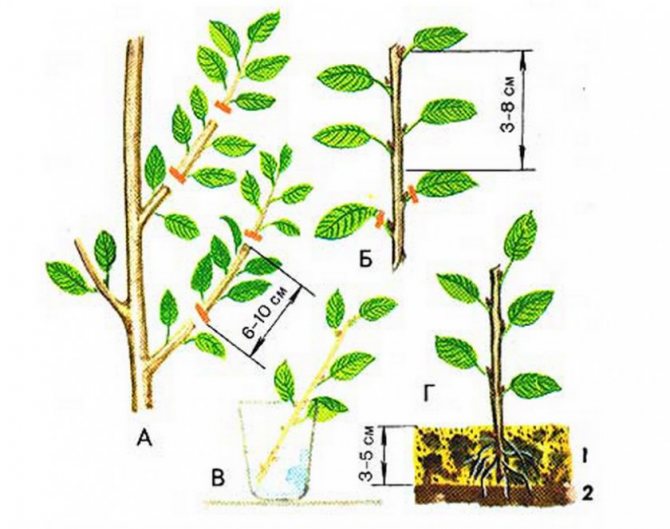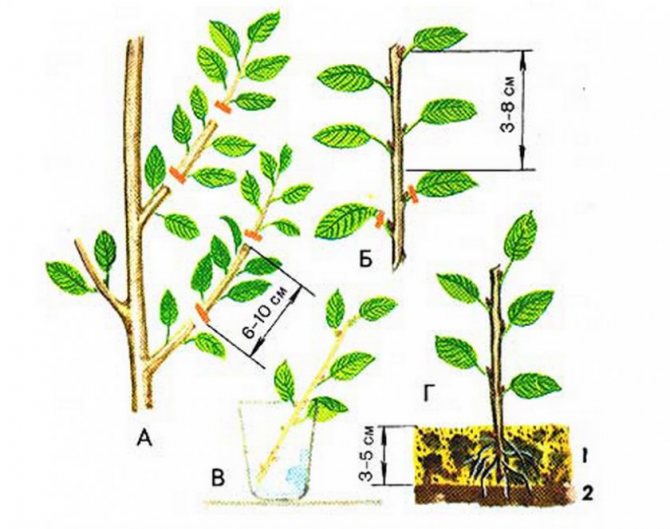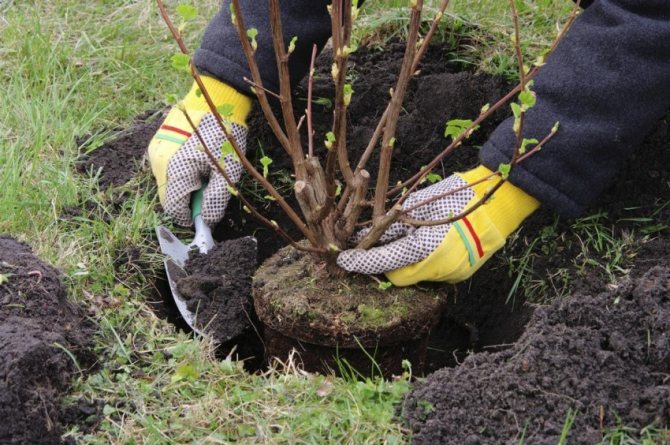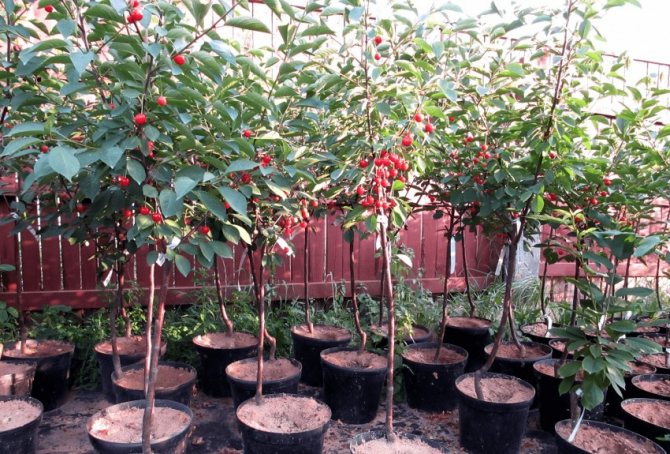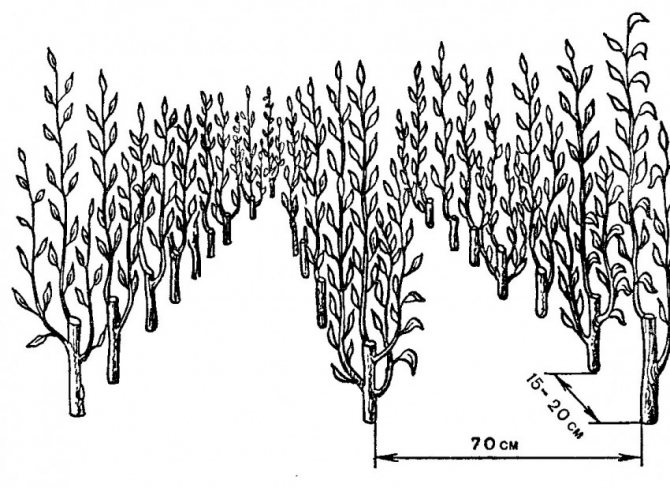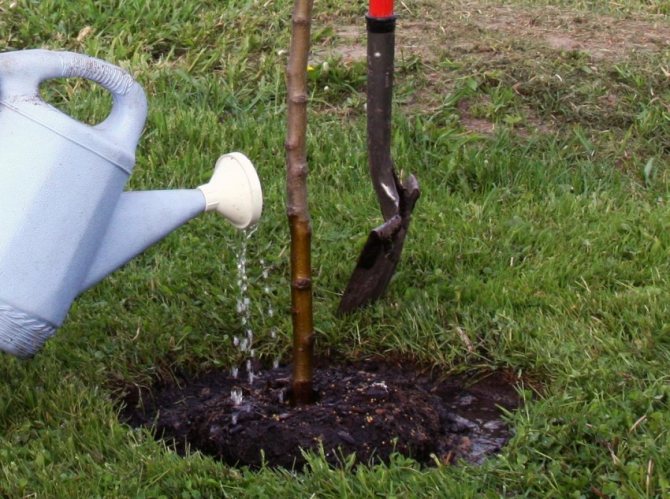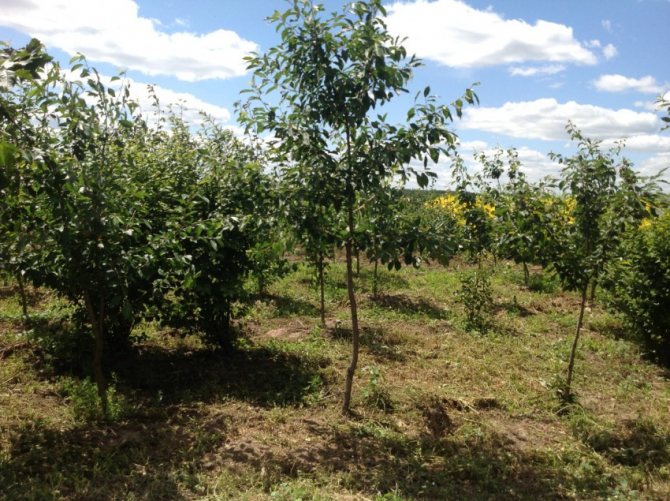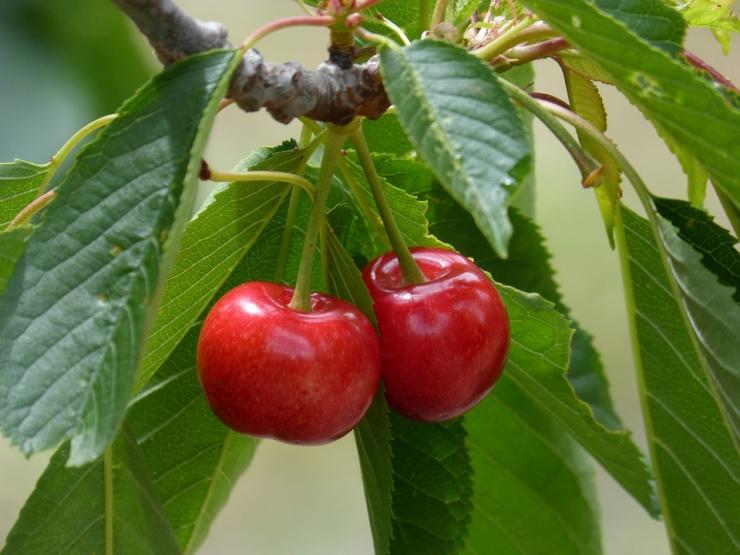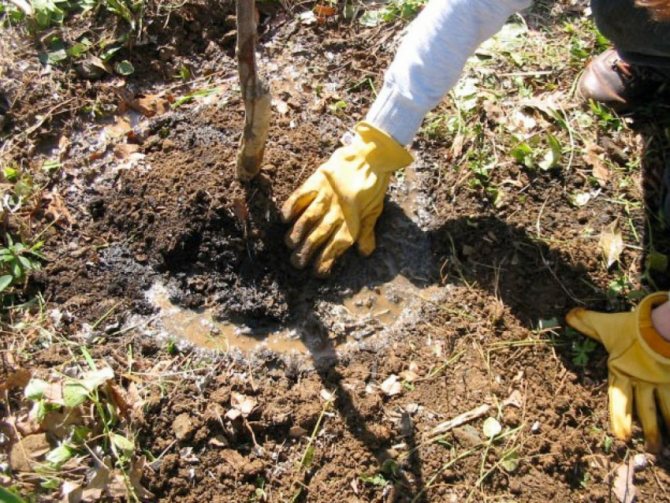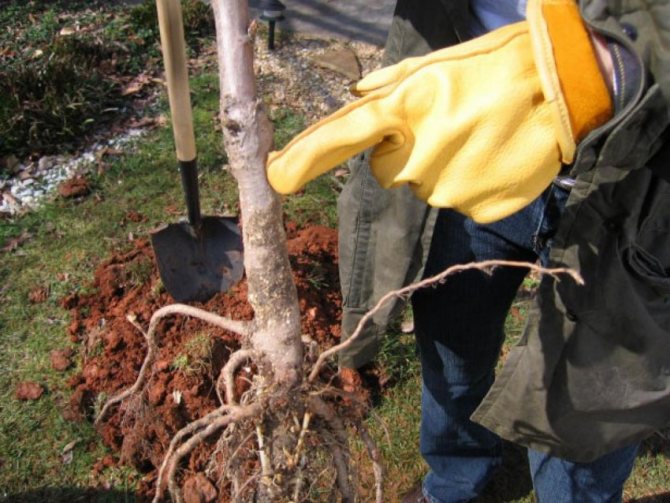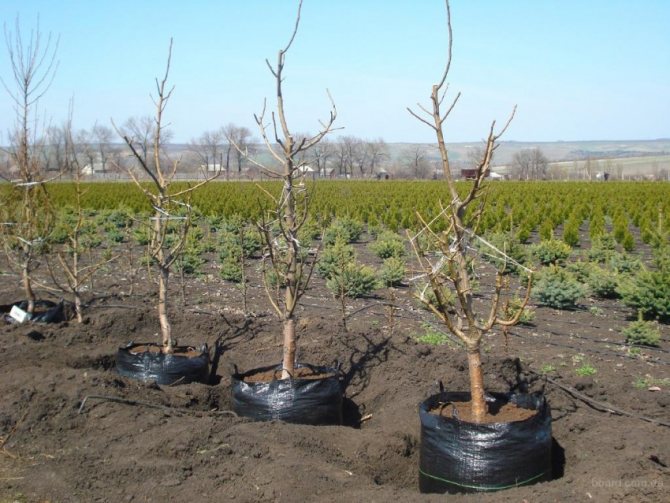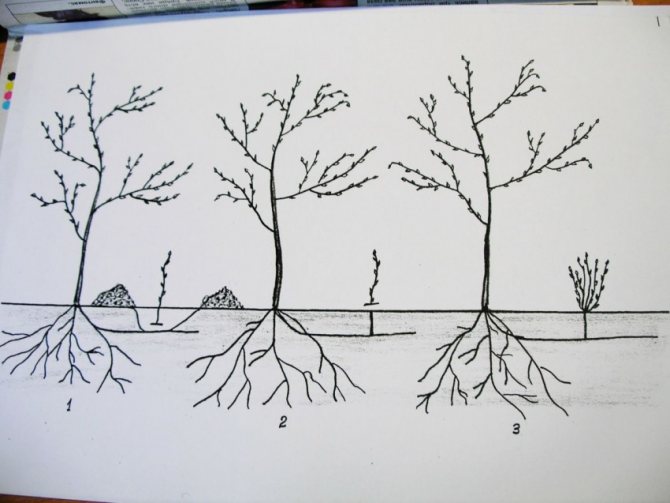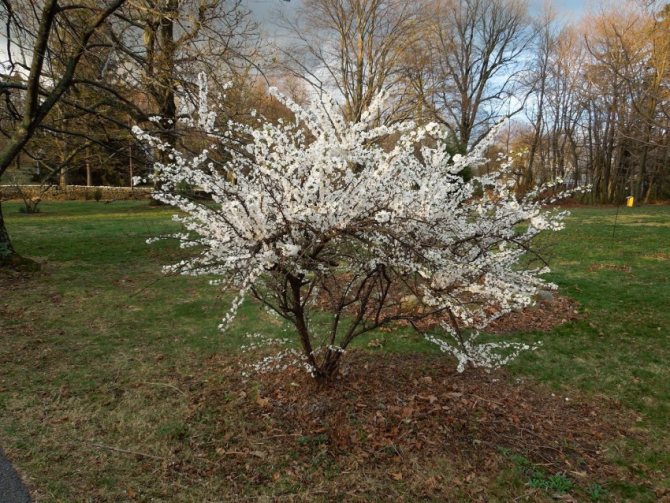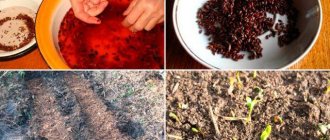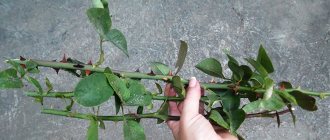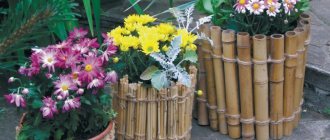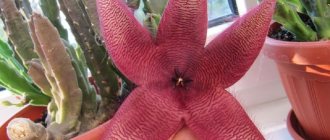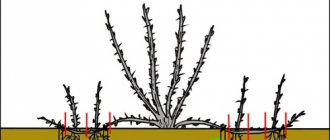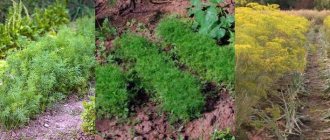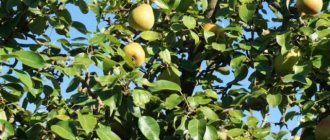Cherries can be propagated in two ways: vegetative (green cuttings) and seed (seeds). Cherry cuttings are propagated for the sake of preserving varietal qualities. The method is troublesome and laborious: they start with the preparation of special soil and a greenhouse for rooting cuttings. When propagating by seeds, it must be borne in mind that the seeds must be correctly stratified, the fruits will differ from the original variety. In this article I will share my experience and tell you how to properly grow cherries from a stone and cut them.
Pros and cons of this method
Before getting down to business at home, experienced summer residents first of all study the advantages and disadvantages of a particular breeding method. Weighing all the pros and cons, they make the final decision.
Propagation by cuttings is a very effective solution. The future tree retains its maternal properties and characteristics. Another plus is that the process is faster than with reproduction in other ways.
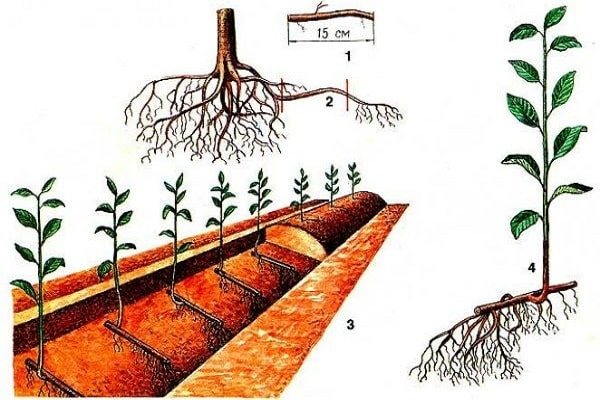
You don't need to do anything special to make it bear fruit. By following simple instructions, a healthy tree is obtained. The fruiting process will not come soon, but the result will not be long in coming.
This method has no disadvantages. Rooting does not take long. A stalk with a developed root system begins to grow, then turns into a full-fledged tree. In a few years, it will bear its first fruits.
In order not to get rid of the overgrowth on the site, it is better to breed cherry varieties that do not let branches. This will shorten the time to take care of the plants.
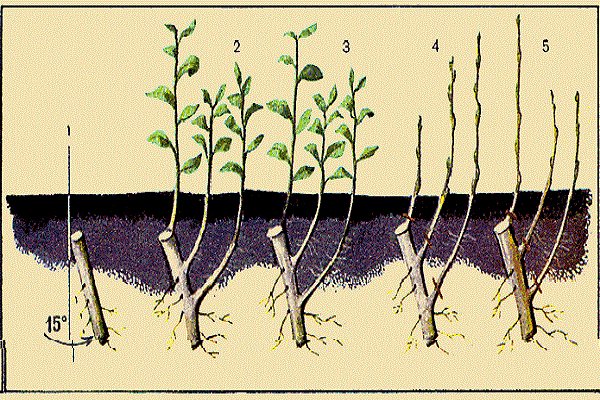

Experienced gardening tips
To improve the survival rate and obtain healthy and strong plants, you can use the following recommendations:
- 2 weeks before grafting, a cut location is selected on the selected shoot. The base of the future cutting is wrapped in black material (for example, tape or plaster) to a width of 3-4 cm. Without access to light, the area under the tape becomes discolored, and the cells degenerate. On the cut off shoot, remove the protection and plant it as usual. This method increases rooting by 30%.
- It is better to cut green cuttings from young trees, since the strength of rooting decreases with age.
- In order to prevent burning of foliage on green cuttings when fertilizing, after fertilization they should be watered with clean water.
- The cut is performed with a sharp knife or razor blade, keeping the shoot suspended.
- Planting sites of root cuttings can be marked with pegs.
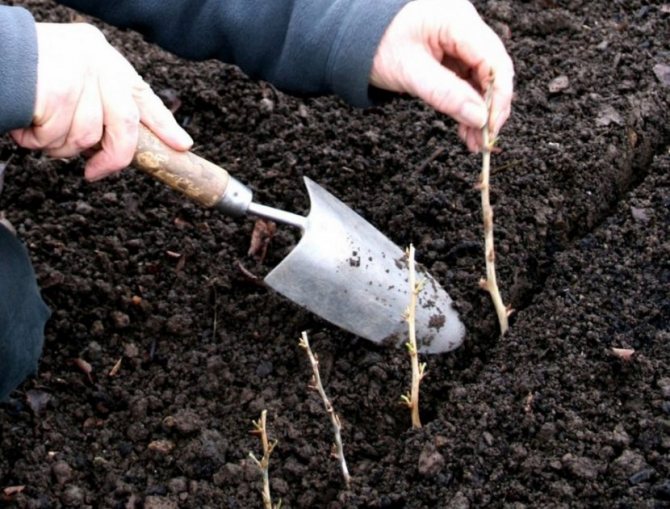

An existing cherry can be easily propagated in the garden if its characteristics are suitable for the gardener. The use of cuttings guarantees the preservation of the necessary qualities and does not require special skills.
What cuttings are suitable
Breeding a favorite variety is within the power of everyone. Planting material is harvested during the active growth of the mother tree. Roughly mid or late July, depending on the region of residence.
In order for the seedlings to be of high quality, it is required to carefully examine the branches, from which the cuttings will subsequently be cut. There should be no traces of pests or the influence of pathogens on them.
It is better to choose branches located on the south or southwest side of the tree.
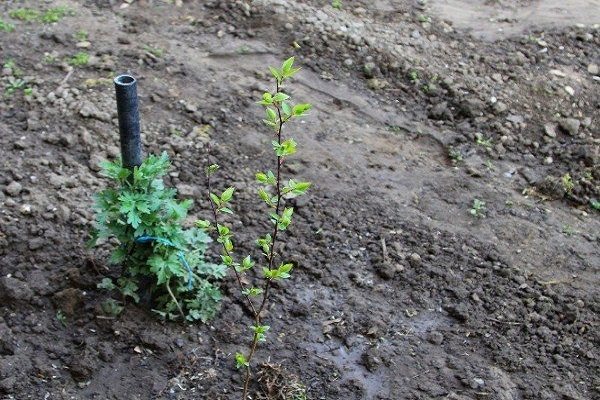

Own-rooted seedlings are obtained by grafting or by using shoots from a selected tree. They retain all the characteristics of the mother tree. For this they are appreciated.
Reproduction by layering cherries will not cause difficulties. To do this, you need to fix the branch with pins and wait until the fixed branch starts up the roots. Then put it in a permanent place.
It is necessary to reject high quality planting material. Since this is the basis for the future harvest.
The genes of the mother tree, subject to the correct technology, are adopted by the offspring and are stored throughout the life of the new plant.
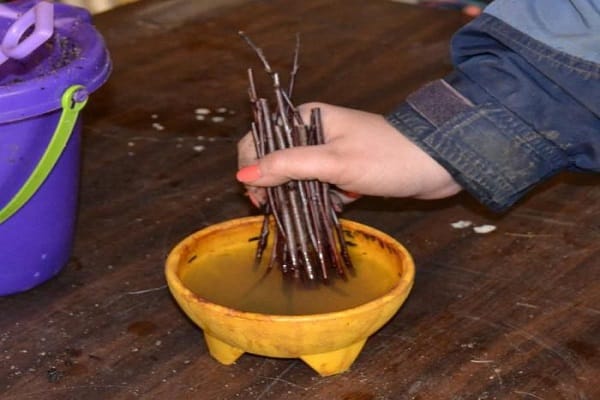

Undergrowth
Growing cherry overgrowth is the easiest method. It is often used by summer residents in the Urals and Siberia. This method helps trees bounce back faster after freezing. They are more resistant to winter than others. For propagation by shoots, varietal bushes are taken. From them, the shoots will grow almost the same as the maternal ones.
The disadvantage of growing by overgrowth is that the trees begin to bear fruit late, even later than grafted trees. Although this method has its drawbacks, it is very easy to use, and the plants are winter-hardy. To start the procedure, choose a cherry bush, near which there are fewer overgrowths. He must be no less and no more than 1-2 years old. Older trees feed on the mother bush, which can cause weak roots. And also shoots that are closer than 1 m are not suitable.
Shoots are prepared in the spring before the buds begin to open. It is allowed to harvest shoots in mid-autumn. It is best to prepare planting material in bad weather. To do this, cut off the root that grows from the mother bush. He is not imprisoned until he is strong. The bottom of the roots is cut into 1/3 part and planted in a trench. While the bush is blooming, you need to feed it 2 times, and also water it constantly. After 1 year, the roots will become powerful, the bush is dug up and planted in a permanent place. If not all the bushes have grown stronger, then they are grown and planted in a year.
Landing dates and schemes
Regardless of how cherries are propagated, there are recommended planting dates. When a young, fragile seedling is better able to take root, form a root system in time and get ready for winter.
Regions with harsh climates require planting cuttings in the spring. Then, for the entire season, the seedling will sprout roots and, having taken root, will be ready to endure the cold.
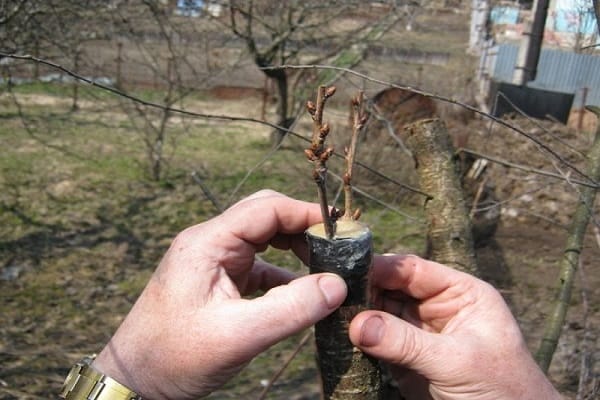

In autumn, planting material is planted in warmer regions with less severe winters. Successfully growing your own tree is not limited to the choice of seedling and planting time. It is recommended to choose a scheme that will enable the young cuttings to grow stronger, forming healthy roots and a strong aerial part.
The cuttings are planted at a distance of 8-10 cm, the planting depth is 3 cm.The distance between the rows is 25-30 cm.
See also
What can be planted next to a cherry in the garden, compatibility with other plants and the right neighborhoodRead
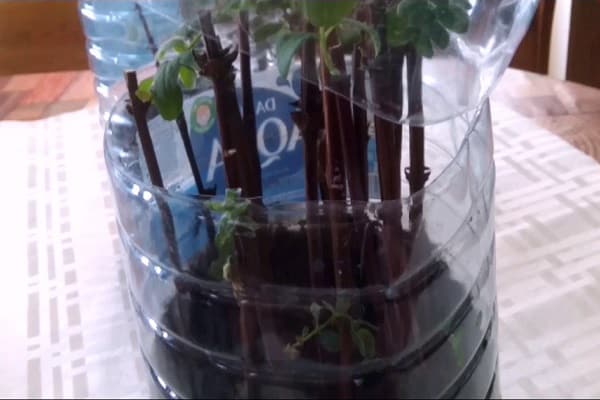

Layers
Layers are the rooted lower part of the bush. It is not difficult to propagate with the help of layering, so even inexperienced gardeners can cope with this. There are 2 planting methods:
- vertical;
- horizontal.
Vertical option
To cultivate cherries, this method is used to cut the lower part of the bush. Pruning is carried out when the bush is in a resting position. When the shoots began to grow a little, they are spud. After that, roots begin to grow. Hilling is carried out 2 times until the height is 15–20 cm. After 1 year, the shoot is cut off from the mother bush and planted in the garden.
Horizontal option
To propagate a cherry with a horizontal limb, take a shoot and carefully lower it to the ground.He should not take his previous position, so he is pinned with a hairpin. The grafting site is covered with earth and constantly watered. After that, the plant is looked after: fed and cleaned from weeds. In this position, the branch grows for 1 year, and after that it is separated from the mother bush and planted in a permanent place.
Optimal conditions
In order for the cuttings to take root, the necessary conditions are created under which future seedlings take root and become full-fledged plants. Agrotechnics of care consists in the appropriate composition of the soil, the correct choice of the day of planting and other related factors.
Soil composition
In order for the stalk to root faster, it is necessary to ensure the supply of essential nutrients. Ordinary earth is mixed with humus, superphosphate, wood ash and mineral fertilizers containing nitrogen are added.
Coarse river sand is poured onto the bottom of the groove or hole to improve drainage. A layer of prepared soil mixture is poured on top of it. Then the cuttings are installed in an upright position and sprinkled with earth.
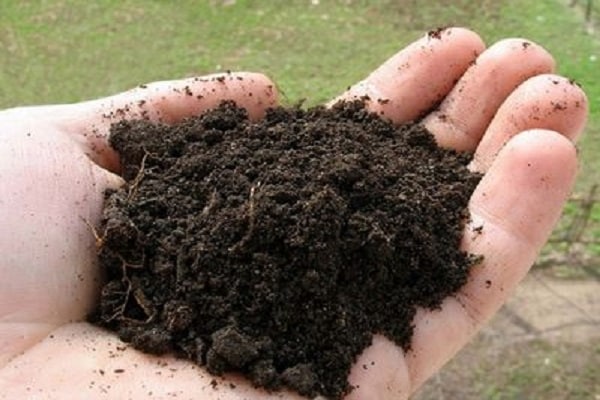

Drop off time
For fast rooting, it is recommended to hold it in a solution that stimulates root growth. In this case, the cuttings are planted in the morning. Experienced summer residents advise planting cuttings in the evening if they have not been soaked in stimulants. After planting is over, cover the soil with polyethylene, creating the so-called greenhouse effect.
Cut the cuttings early in the morning and in the evening. A healthy branch is chosen, then it is divided into a number of segments, about 30 cm each.
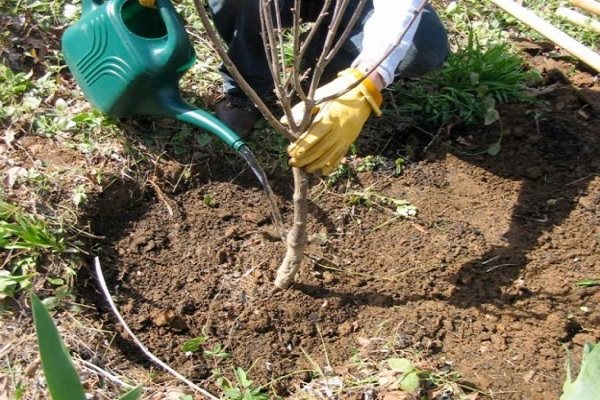

Hole dimensions and depth
It all depends on the number of cuttings selected for planting. If there are a lot of them, then the bed is made wide, if not enough, then a small area is enough. The hole is dug and filled with a nutrient mixture, then a cutting is stuck into it to a depth of 3 cm.
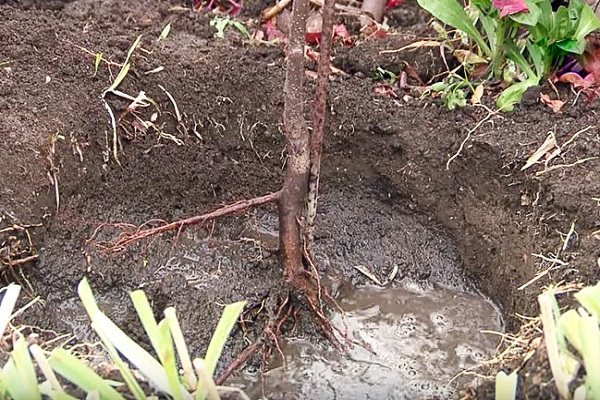

By cuttings
It is not difficult to propagate cherries by cuttings. To get a lot of planting material and not spend personal funds, gardeners propagate cherries with green cuttings. Green cuttings are prepared early in the morning or in the evening. Wait until they harden and turn red at the base. The top is cut off next to the kidney, and the bottom is cut under the kidney. The cuttings themselves should be 30 cm long. All bad and unripe leaves are cut off, and the green cuttings are placed in water.
In order for the green sprouts to take root as soon as possible, you can stir the water with the Zircon preparation.
It promotes good engraftment. It is also worth preparing a seat for the processes. For the process to be successful, you need to do the following:
- completely dig up the ground in the garden;
- prepare the beds;
- make a ditch in the same place;
- put drainage in the form of coarse sand or pebbles at the very bottom;
- then place the earth on the drainage: so that the earth is fertile, it is mixed with humus, superphosphate, ash and nitrogen fertilizers;
- in the end everything is well watered.
After that, you can start planting cherry sprouts. Cuttings are planted at a distance of 8-10 cm and at a depth of 3 cm. The shoot itself is placed vertically. The best time to plant and propagate cherries by cuttings is evening. When all the processes are planted, they are covered with foil. So they will be protected from the strong Sun. And also the film will create a kind of greenhouse and accelerate engraftment.
In the first days after planting, it is necessary to water and ventilate the plant. It will take 2 weeks, the cuttings will release roots, and after another 2 weeks they will root well. It is necessary to take care of the plant until spring. Care consists in moistening the soil, loosening the soil and weeding.
Cherry propagation by cuttings in the summer can be carried out not only in the garden, but also at home. To propagate cherries by cuttings at home, take pots of good depth, fill them with soil, and plant the scions. The containers must be covered with foil and not removed until the shoots are well rooted, and sometimes ventilated.
Planting technology
Subject to certain requirements, when planting cuttings, it is possible to achieve a positive result.
The procedure is as follows:
- Preparation of planting material. Selection and cutting of cuttings. The lower cut should be beveled, it is made at a distance of 1 cm from the kidney, the upper one is even, it is cut above the kidney.
- Soaking in stimulants. This item is carried out according to the individual wishes of each gardener. For a day, the cut branches are placed in the mixture, only then they are planted in the ground.
- Preparation of the beds and soil. If planted in grooves, you should start shaping it. Then prepare a mixture of soil to fill.
- Landing. The cuttings are placed vertically.
- Watering. The earth is well watered, a watering can or irrigation can be used.
- Cover with polyethylene. This is necessary so that a certain microclimate is created near the roots of the cuttings, which will help them to take root.
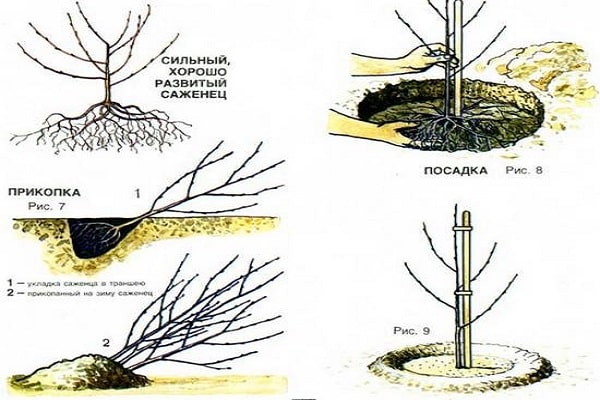

After the planting process is completed, it remains only to take care of the cuttings.
Rooting methods
During the summer, rooting is carried out in the nursery, in the open field. You can root a cherry stalk in a soil substrate or in water. There are more nutrients in the substrate, more air is available, so the results are better when rooting in the soil.
Let us consider in more detail the rules for planting cuttings in a school, which can be organized in the summer at a summer cottage or in a personal plot, and in winter in a container in an apartment or on a heated loggia, balcony.
Landing
Agrotechnology for growing cherry seedlings provides for the organization of greenhouse conditions with 100 percent air humidity around the cuttings. This moment should be foreseen in advance and prepare plastic wrap or glass jars for organizing the microclimate.
Features of the propagation of cherries by green cuttings
The most common method of propagation of fruit trees, which is used in nurseries. The process is painstaking, but the result is achieved quickly. The seedlings are rooted and retain all the maternal characteristics.
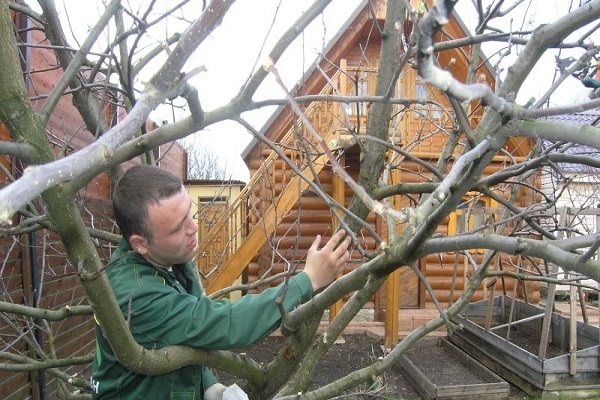

Reproduction by green cuttings involves:
- Choosing a site for planting. The place should be shaded, partial shade is suitable. The sun's rays will dry out the branches, and a strong shade will develop diseases.
- Preparing the pit for planting. Depth on shovel bayonet, then filled with rubble or gravel. Fertile soil is poured on top and everything is covered with a layer of sand.
- Preparation of planting material. The cut branches are kept in a stimulator and planted in the ground.
- They build a mini-greenhouse and water it constantly. The amount of moisture should be closely monitored. Waterlogging will lead to decay of future seedlings.
See also
Description and characteristics of cherries of the Standard Urals variety, history and features of cultivationRead
If something did not work out the first time, do not despair, you need to try again. The main thing is the result, because experience comes over the years. Growing, well-rooted trees are transplanted for growing in the fall.
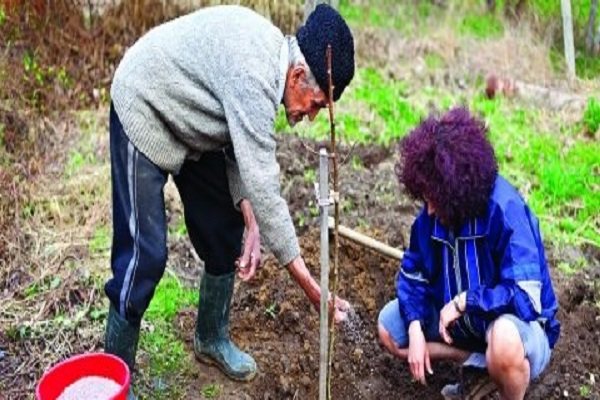

Using cuttings when planting in summer or fall
It is not difficult to propagate cherries by cuttings. If you follow some rules and conditions, you can achieve good results.and get some new cherry bushes without buying it.
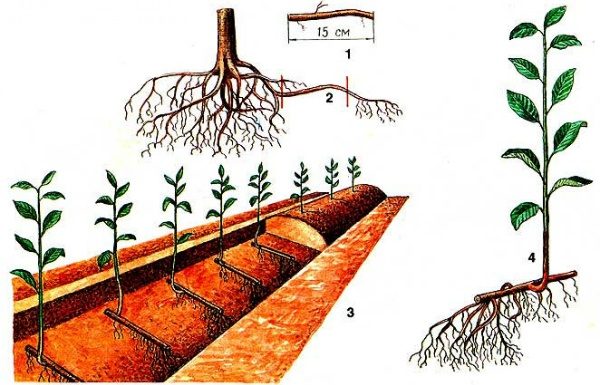

Cherry propagation by root cuttings
In summer, cut the cuttings from the cherries. Cuttings should be harvested in the morning or evening. They should be hardened and reddened. The upper cut falls above the kidney, and the lower cut goes under the kidney with a distance of 1 cm... Cuttings are equal to 30 cm. All undeveloped leaves should be removed. Put the cut cuttings in water.
Prepare a rooting site for the cuttings. For the process to go in the best possible way, you need:
- Dig up the area for planting.
- Make the beds.
- Dig a groove in the beds.
- Pour drainage at the bottom (coarse sand, pebbles are suitable for drainage).
- Put a fertile soil layer on the drainage layer (mix the earth with humus, add superphosphate, wood ash and nitrogen fertilizers).
- Drizzle.
Now we proceed to planting the prepared cherry cuttings... It should be planted with a distance of 8-10 cm. To a depth of 3 cm. Place the handle vertically. This is best done in the evening.
At the first time of planting, it is recommended to water and ventilate from time to time. In two weeks, the seedlings will have roots. After another two weeks, the cuttings are completely rooted. Continue caring for young bushes until next spring. Care consists of weeding, loosening and watering.
You can propagate cherries by cuttings not only by planting in the ground in the country, but also at home... To do this, take containers of sufficient depth. Fill them with loose soil. Plant prepared cuttings in containers. Cover the planting with a film or other container, but transparent. Keep the film until the cutting is completely rooted. Please note that plantings must be ventilated.
Seedling care after planting
If rooting went well, this does not mean that the plant should be left unattended. You must continue to look after him. The success of all actions depends on how correctly this is done.
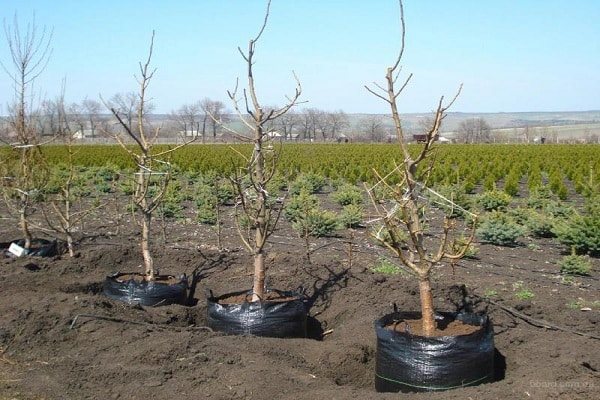

Watering
Immediately after the cuttings are planted in the ground, they should be constantly watered, preventing the soil from drying out. But also do not forget to observe the measure. Excessive moisture will not lead to anything good.
When future seedlings begin to take root, watering is reduced and the polyethylene is removed. But they do it in stages, first accustoming the plants to open air for several hours, gradually reaching the whole day. Then they are completely removed and left open. As it grows, the frequency of watering is reduced to 1-2 times every 10 days.
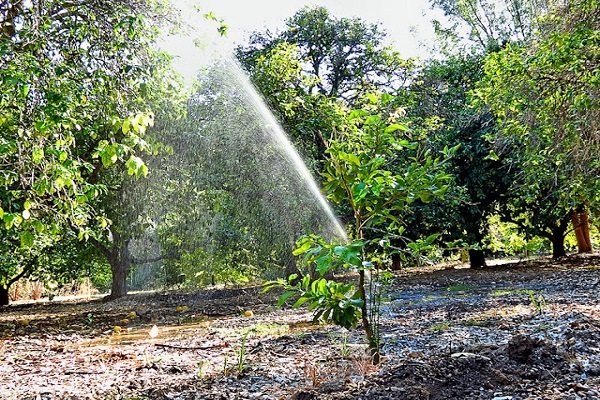

Grown up young trees are watered several times per season:
- during the period of swelling of the kidneys;
- during flowering;
- after partial shedding of fruits;
- after the completion of fruiting.
The tree does not need an abundance of moisture, it will not cause anything except diseases. After each watering or rain, it is recommended to loosen the soil, this will help to retain moisture in the soil longer, prevent the appearance of weeds and provide oxygen to the root system.
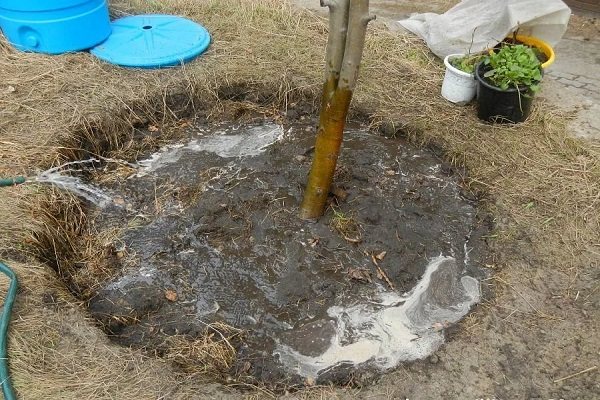

Fertilizer
Any plant responds positively to feeding. It is important not to overdo it here. Complex mineral fertilizers will help restore the lack of nutrients in the soil composition.
Organic fertilizing is recommended once a season. Wood ash will not interfere with a growing tree, which, in addition to nutrition, performs 2 more functions, repels insect pests, and fights pathogens of some diseases.
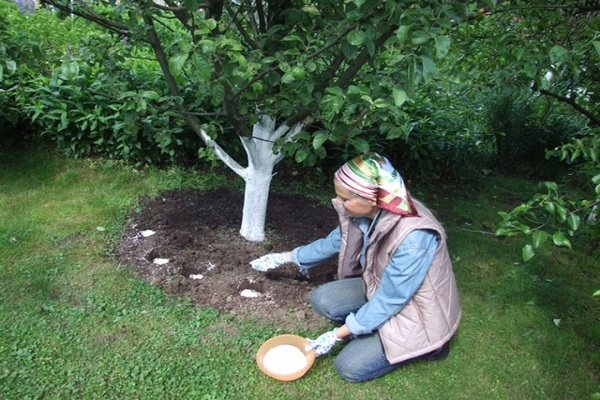

Cherries need liming, but before adding lime, you need to know the pH of the soil in which the seedlings grow. This procedure is performed every 5-6 years. The application rate for each bush depends on the acidity level of the soil.
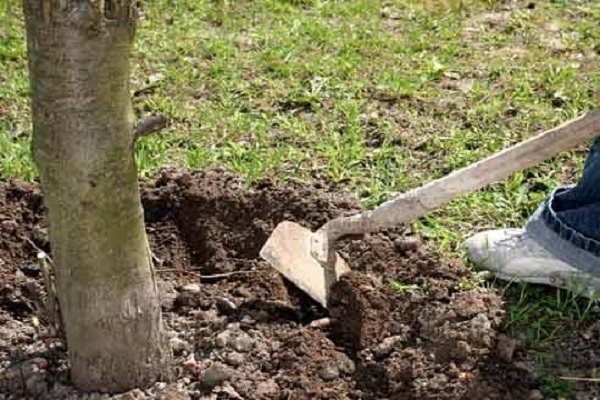

Treatment against diseases and pests
In order to get a harvest and not ruin a young plant, it is necessary to process the seedlings. Particularly much attention should be paid to young, immature sprouts. They need care. It is required to carry out preventive treatments for diseases characteristic of the culture.
An exception is when the mother plant is immune to disease. Then no processing is needed. Chemicals are used, but only before flowering. In the future, special mixtures are prepared according to folk recipes. Their effect is lower, but they are safer for human health.
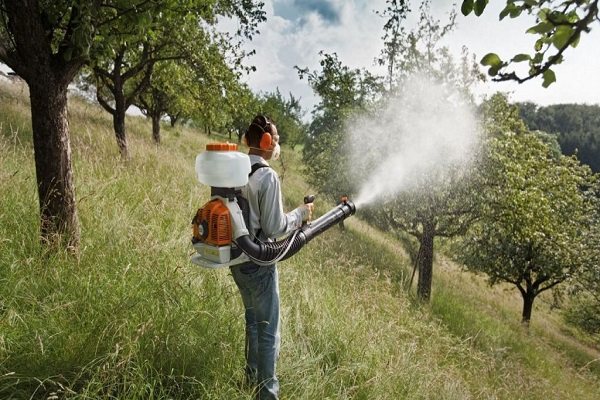

Traps are set against insects, special sweet mixtures are poured into them and pests are lured.
Growing cherries by cuttings is not a quick process, but it is simple and effective. You don't have to do anything special and you don't need to have special skills.And the result is his own tree, in which the gardener is completely confident.


Vaccination
Often gardeners use the grafting or budding method to propagate the fruit tree. This method is used only when they want to grow varietal trees. For the procedure to be successful, wild rootstocks are chosen. The plant must be 2 years old to be grafted. The procedure is carried out in the spring. Sprouts are taken in the northern area in late autumn. If they come from the south, then they should be grafted immediately. The right time for budding starts from June 20 to July 15.
The branches are cut only from young bushes, 35 cm in size, no less. Then they are placed in warm water, after which the eyes and kidneys are cut off with a knife. The grafting procedure is the same as for an apple tree. For a positive result, it is necessary to carry out budding with 2 eyes from all directions of the stem. After the procedure, the vaccination site is wrapped with tape.
Oculating is best in bad weather. After 2 weeks, the plant is checked for survival and the tape is slightly weakened. In order to protect the plant in the cold, they huddle it to the grafting site. With the arrival of spring, the grafted branches are cut off and only a thorn is left. A branch with buds is tied to it. The garter is carried out before the start of growth, and the next one after 2 weeks. And only when July begins, the thorn is removed completely. During the summer period, the cultivated plant needs careful care:
- in a circle, plants loosen the soil;
- remove weeds;
- watering;
- add fertilizers.
Foliage begins to form in the fall. It can be trimmed before transplanting to a permanent location or after transplanting. Excellent results are shown by budding cherries on cherries. Breeders were able to breed excellent varieties: Sasha, Kubanskaya, Miracle-cherry, Nadezhda, Poppy and Morozova, Yuzhnaya and Dessertnaya.


